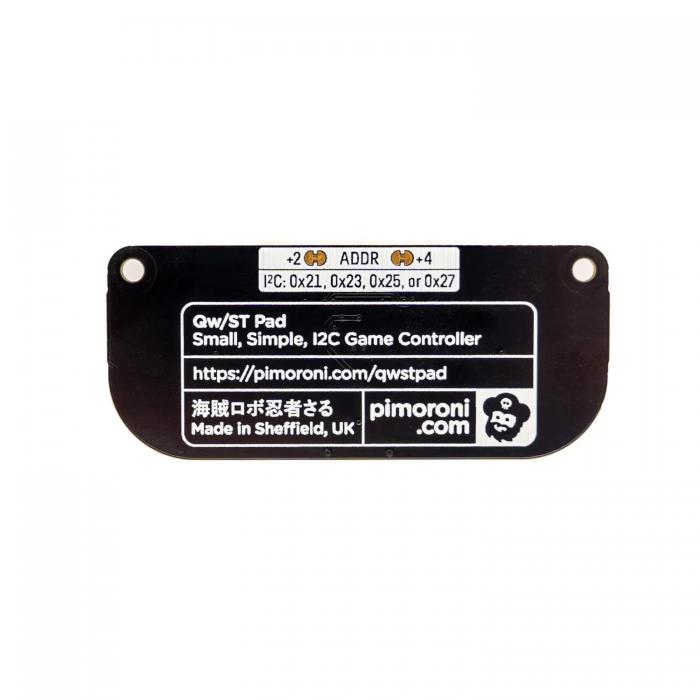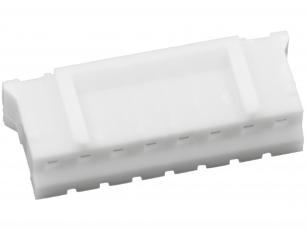Product description
Game controller for your Raspberry Pi or Raspberry Pi Pico project.
Equipped with QWIIC connector for fast and reliable connection.
Can be daisy-chained (12C) for up to four players.
Specifications:
- TCA9555 I/O Expander
- 8x large user buttons (labelled U, D, L, R, A, B, X and Y)
- 2x small user buttons (labelled + and -)
- 4x white LEDs
- 2x Qw/ST (Qwiic/STEMMA QT) connectors
- I2C interface, with addresses: 0x21 (default), 0x23, 0x25 or 0x27
- 3V to 5V compatible
- Fully assembled, no soldering required
- Compatible with Raspberry Pi computers
- Compatible with Raspberry Pi Pico/RP2040/RP235
- Dimensions: 58x25x6.7mm (LxWxH, approx). The mounting holes are M2.5 and are 3mm in from the top corners (52mm centre to centre). Corner radii are 3mm at the top and 10mm and the bottom.









